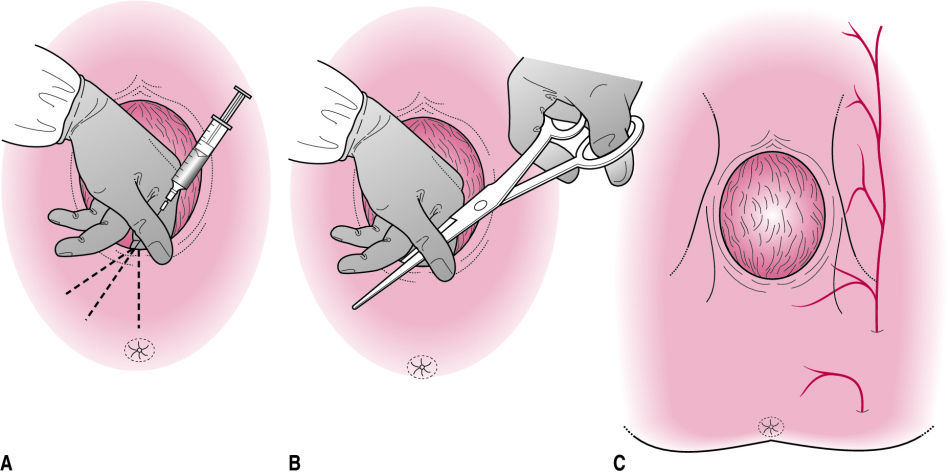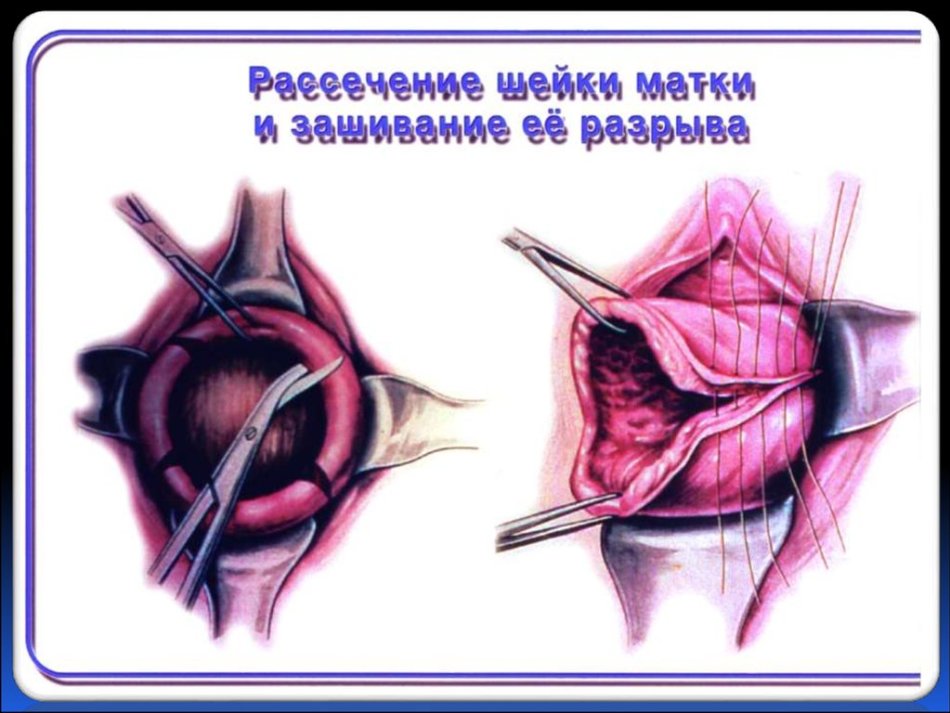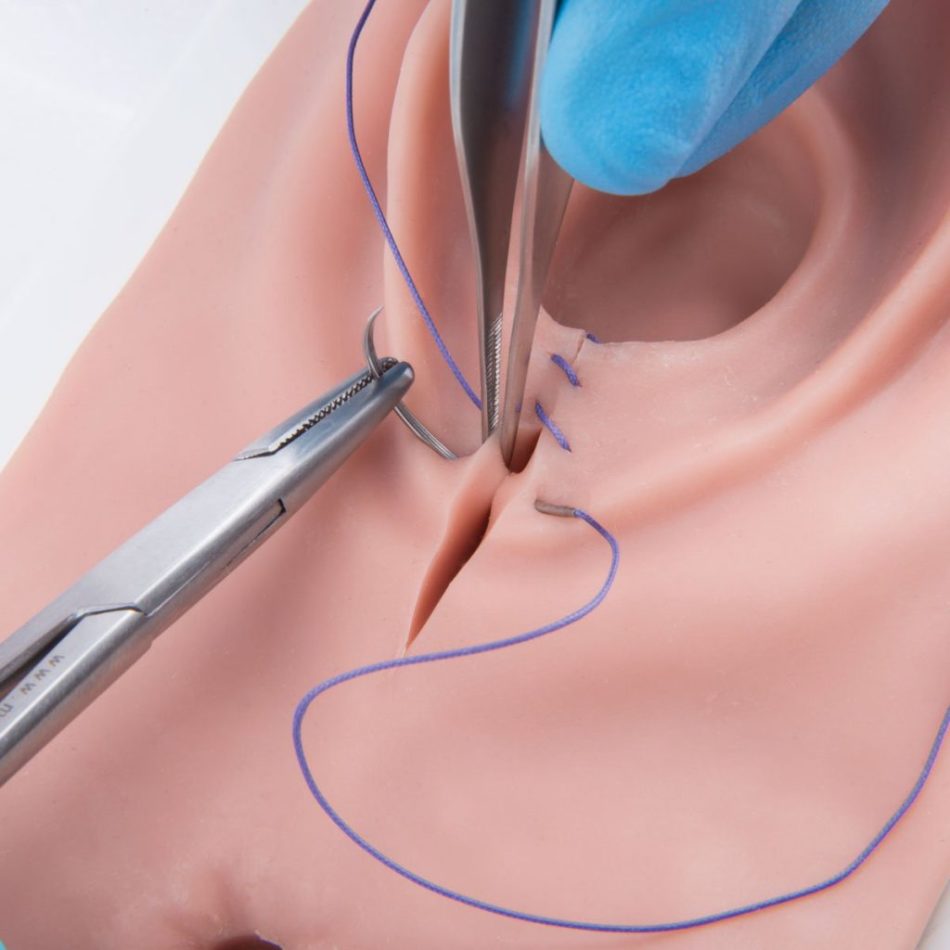Features of healing of ruptures and seams after childbirth.
Content
- Seams after tears during childbirth: types of trinkets
- How long does it heal, the seam hurts after the breaks during childbirth?
- Why did internal seams overlap after childbirth?
- On what day is the seams after childbirth removed?
- How many seams heal after the birth of the external?
- How many seams heal after childbirth internal?
- How long does the internal seams heal on the neck of the uterus?
- After how much the seam heals after childbirth - how to behave?
- How and how much to process the seams after childbirth?
- Internal seams after childbirth: reviews
- Video: Gaps during childbirth
Childbirth is a physiological process through which almost every woman passes. It is the excretion of the fetus, as well as the last from the uterus through the cervix and vagina. The process is quite painful and complex, and often ends with the appearance of ruptures. In this article we will tell you how much internal and outer seams heal after tears.
Seams after tears during childbirth: types of trinkets
To understand the healing speed, you need to know which material was used for stitching. It should be quite elastic, stretch well so that there is no severe tension, tissue necrosis. But at the same time, the thread should be strong to withstand the load. The suture material should be neutral and absolutely inert in relation to the tissues of the body. Synthetic and natural fiber for sewing can be used. It can be absorbed or not absorbing.
The seams after breaks during childbirth, types:
- Natural materials include silk and cotton. Silk is a durable material, and quite elastic, while it can form a strong node. This material is conditionalnot absorbingbecause over time, its strength decreases, and after about a year there is no trace of threads. Silk fibers are not inert and very often infections can be observed at the site of their contact with the skin. Cotton has low strength, and is also able to cause inflammation.
- Suture material is selected depending on the location of the gaps. If the gap inside, then resorption materials are used. The most optimal option is Kitut. This is a natural fiber, which is distinguished by a pronounced reaction and risk of infection.
- Gynecologists note the inconvenience in the use of Kitgut. This material has been rarely used recently. Basically, resorption polymers are used, which practically do not cause reaction from the body. Survated quickly, very durable. It is convenient to use them due to the lack of sliding in the process of use. Often polymer threads are used in cardiac surgery to stitch tendons.

How long does it heal, the seam hurts after the breaks during childbirth?
The seams are sometimes just necessary and you can’t do without them. The midwives try to prevent the appearance of ruptures, carry outepisiotomyTo make the seam smooth and even, without torn edges. After all, it is much more difficult to sew shreds of fabric than an even incision. In addition, ruptures in the perineum do not look aesthetically pleasing, even after a rather neat and thoroughly stitching tissues.
How long heals, the seam hurts after the breaks during childbirth:
- The first five days, when the seams are only applied to the wound, an inflammatory reaction can be observed. A huge number of leukocytes that are destroyed by microbes are directed to this area. There may be swelling, redness and pain. During this period, the fabrics have not yet grown together, and they are kept in the end to each other with the help of seams.
- From 7 to 14 days, the phase of fibroblasts begins. It is during this period that granular fabric occurs, collagen and elastin forms. Already during this period, a more dense connection of tissues is observed, but it is early to remove the threads. The threads are removed after the fabrics have grown together quite well.

Why did internal seams overlap after childbirth?
During childbirth, tears in the area of \u200b\u200bthe neck and perineum are usually observed. As indicated above, now the process of conducting childbirth is provided in such a way that there are no breaks during the manipulation, in other words, the fabrics are cut.
Why did the internal seams overlap after childbirth:
- Indication for the cut in the area of \u200b\u200bthe neck, vagina and perineum ispresentation fruit, large child, as well as some gynecological diseases of a woman.
- The incision in this area helps to expand the space and quickly carry out the process of childbirth. Oftenepisiotomy It is used if the child suffers from hypoxia and for a long period of time is without amniotic fluid.
- Inside, in the area of \u200b\u200bthe neck and vagina, they use modern polymer materials that are absorbed. Only the threads that need to be removed are used outside.

On what day is the seams after childbirth removed?
Typically, the process of removal of the joints is carried out about 7-10 days after their application. If the woman in labor is in the hospital for 7 days, then the threads are removed in the hospital, in the postpartum department.
On what day the seams are removed after childbirth:
- If the process of the appearance of the fetus was successful, and there is no need to detain the mother and the child in the hospital, the woman in labor is discharged on the third day. We'll have to come to the doctor about 7-10 days after the seams are being removed to remove them.
- The doctor cuts the thread with scissors and pulls them out with tweezers. This is an unpleasant procedure, the soreness of which depends on the pain threshold of a woman. Someone compares this with a mosquito bite, someone really hurts.
- The length of the seam from the outside is about 2-3 cm. Often moves away from the small labia from the bottom and is almost invisible. If a woman adheres to the advice of the doctor, then no traces afterepisiotomy No left.

How many seams heal after the birth of the external?
The process of fostering external seams is delayed for about 2 weeks. This is exactly the period during which the woman in labor cannot be sitting down.
How many seams heal after childbirth:
- It is necessary to be prepared that you can’t sit for 14 days, and all manipulations for the care of the newborn, household chores must be done standing or while lying down. Therefore, check out in advance with the poses for feeding the crumbs in the position of lying down.
- You can’t even sit on one side. It is recommended to leave the hospital in a reclining state, on a seat thrown back. The complete fusion of both internal and external seams occurs within 8 weeks. This is enough so that even when applying a certain load, the seams do not diverge.
- If you sit on the buttocks earlier than 14 days afterepisiotomy, then tissue rupture may occur
Raps in the seams are facilitated by improper nutrition. Therefore, women in labor are often prescribed a diet with cereals, cereals, stewed vegetables that have a liquid consistency. It is necessary that dense feces are not formed in the intestines. Constipation can end in tissue rupture.

How many seams heal after childbirth internal?
Complete healing occurs after 8 weeks, it is through such a period of time that it is recommended to start sexual life after delivery. If the birth was heavy, there are seams on the cervix, muscle tissue is sewn, then the recovery process can drag out up to six months.
How much the seams heal after childbirth internal:
- It all depends on the specific situation and the recommendations of doctors. If there are no special indications, then the wounds are delayed 2 months after the delivery. If we are talking about a seam after a cesarean section on the uterus, then recovery occurs about six months later.
- Doctors recommend starting the next child, no earlier than two years later. It is after 2 years that the seam becomes strong enough and dense in order to give birth next time on its own.

How long does the internal seams heal on the neck of the uterus?
The main feature of internal seams in their painlessness.
How long the internal seams heal on the neck of the uterus:
- You can start living sex life in the presence of seams on the cervix in 2 months.
- On the cervix of the uterus, as well as inside the vagina, a small number of nerve endings, which is why the seams are healed painlessly and practically not felt.
- If you carry out palpation, then even a few years afterepisiotomy On the cervix and the walls of the vagina, you can feel the seams or the trace of the cut.
- As for the outer seams, after six months they become absolutely invisible.

After how much the seam heals after childbirth - how to behave?
External seams are often infected due to non-compliance with the doctor's recommendations. A large number of discharge, the remains of urine, are included in this zone,lochiathat are allocated from the uterus after delivery, vaginal secret.
After how much the seam heals after childbirth, how to process:
- If these discharge falls on the seams, inflammation, redness, even swelling may occur. Within 5 days after the seams, pain and edema are a variant of the norm. But if redness lasts more than 7 days, you need to urgently go to the hospital.
- Perhaps there are internal hematomas that must be opened in order to remove blood from them. If there are inflammation in this zone, they recommend re -cleaning and imposing seams.
- To prevent the occurrence of inflammation in this area, it is necessary to wash your hands before visiting the toilet and often change the gaskets. Not to allow the gasket to touch the seams more than 3 hours. Necessarily change the linen, towels daily.
- Remember that within a month or two, depending on the complexity of the birth, it is not recommended to take a bath. It must be replaced with a shower. It is necessary that the wound in this area be dry.
- Often gynecologists advise women in labor to lie on their side, sit on a circle or pillow. It is recommended to lie with diluted legs without linen so that this zone does not sweat. Increased humidity provokes the occurrence of complications.

How and how much to process the seams after childbirth?
External seams immediately after stitching, usually treated with antiseptics, green or peroxide. Every day in the postpartum department, tears are also processed. If there are no concomitant pathologies, then after discharge of the woman in labor home, they do not recommend the use of substances for processing the wound. This is necessary to reduce contact with the postoperative wound.
Than and how much to process the seams after childbirth:
- Accelerates healing of wounds with ordinary soap, twice a day, morning and evening. It is advisable if possible not to put on linen, or to minimize its use. Use disposable absorbent diapers at home, sleep without linen.
- Thus,lochia will be absorbed into the diaper. On the network you can find many tips on the processing of the woundTraumel AndLevomekole. The composition of these ointments has a large amount of fat, vegetable or synthetic oils that prevent the normal healing of tissues.
- It is recommended to use laundry soap and wash this area more often. Instead of green, it is recommended to use antiseptics, such asMiramistin and chlorhexidine. Doctors advise do not go into this area once again. The processing of internal seams is not carried out. Even in the maternity hospital they try not to go into this area. An examination by the district doctor is recommended within a month after delivery.

Internal seams after childbirth: reviews
Of course, the episiotomy procedure is not the most pleasant, but it helps to reduce the time of childbirth, protecting her mother and child. Below you can familiarize yourself with the reviews of women who have experienced gaps during delivery.
Internal seams after childbirth, reviews:
Olga, 33 years old. Last year, I gave birth to my first child, before that I was treated for a long time for infertility. I am glad that I gave birth to myself, but there was a gap on the neck of the uterus, the seams were applied to me. I did not feel pain, but six months have passed since the birth, I feel some discomfort during intimacy. Perhaps something interferes. Although nothing hurt and now does not hurt.
Svetlana, 28 years old. When she gave birth to a second child, they made an episiotomy, due to the fact that the fetus is large, weighing 4 kg 100 g with my weight of 55 kg, this is a lot, so it is not surprised that they made a cut. The sewing process was painless, but during the healing there was discomfort. I was not scared that it was impossible to sit, and did not cause discomfort, but the seams were constantly sick and pulled. In the process of removing the seams, it turned out that one of the upper ones went out. But over time, everything has grown together and nothing is visible, even with a detailed examination.
Yana, 31 years old. Last year I gave birth to my daughter, but the birth was emergency and very quick. Therefore, they made an episiotomy. There are no ruptures on the cervix, but there is a seam in the vagina and outside. I did not feel pain inside, but there was some hell outside. Since the child was very restless, I could not go to the doctor, take off the seams, so I removed them at home on my own. It did not grow together very well, traces of intervention and excess fabric in the vaginal entrance are visible. She remained unhappy, perhaps in the near future I will ripen for plastic surgery. Excess fabric in this zone is very confusing me. I understand that only my husband sees it, but I feel discomfort and complexes.

Read articles on the topic:
- Symptoms of premature birth
- Folk signs on the definition of the sex of the unborn child
- 10 prohibitions for parents when raising children
- What you need to know to give birth at home?
- Councils of psychologists for leaving the postpartum depression
Often, women after tears are complex during intimacy, because the seams have uneven edges or tissue remains. That is why obstetricians and gynecologists prefer to carry out an incision in the vaginal and perineum. This allows you to make the seam neat and almost invisible.
Video: Gaps during childbirth







